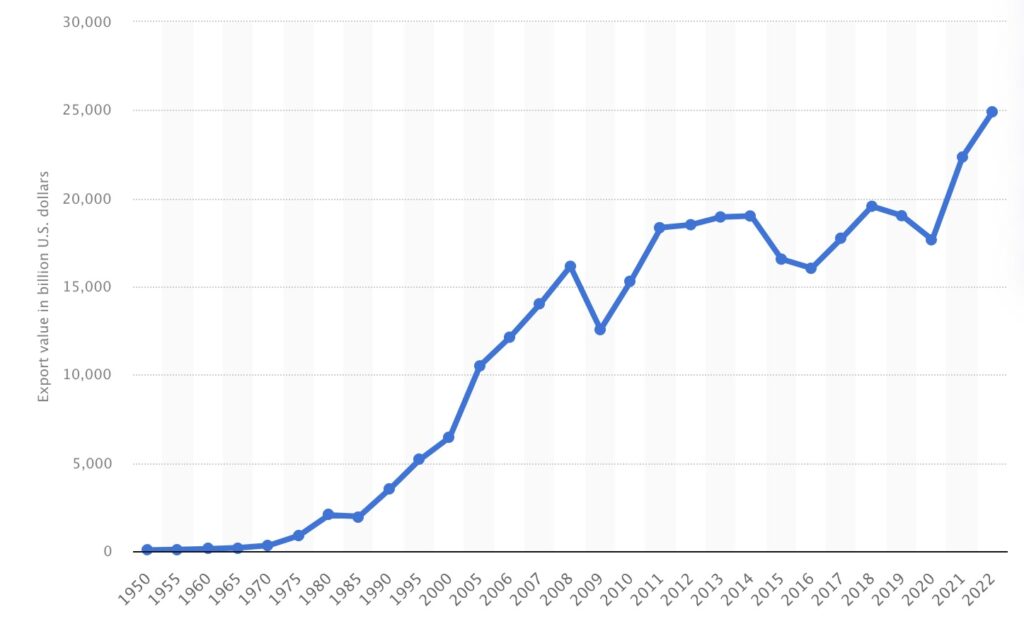International Trade is, without exaggeration, a very old human activity. For example, wine production and trade can be traced back to the 6th millennium B.C. (Georgia) and the famous Silk Road has transformed the ancient world.
Then, historically, international trade has been moved by inventions, innovations and the human desire to sell the surplus of the manufactured product.
As science and technology advanced in the middle of the 20th century, the global industrial division of labor continued to take shape. Depending on their unique competitive advantages, various nations engage in various production phases.
The efficiency and processes of production are improved using computers in the manufacturing process. Globalized production and worldwide trade are made possible by Internet use. Globalization began when numerous industrialized nations entered worldwide trade because of the second industrial revolution.
Impact of Industry 4 on International Trade
In the 21st century with the development of the most modern technologies such as Big Data, IoT and others, many digitally-savvy companies started to implement new models combining these technologies with international trade activities. This trend clearly enforced global trade, because at end of year 2022, Global export value of Trade in goods hit its historical

record of $25 trillion.
Trends in global export value of trade in goods from 1950 to 2022 (source: Statista)
The Role of AI in Industry 4
The initial proposal for artificial intelligence technology was made by academic John McCarthy at the 1956 Dartmouth Conference. AI is considered one of the defining technologies of the fourth industrial revolution (4IR), a concept proposed by German industry during the Hannover Messe event. Over the following decades, the field of AI technology expanded significantly, becoming crucial to international trade.
Businesses can leverage AI to lower logistics costs and enhance supply chain management, thereby increasing operational efficiency. Moreover, AI applications in international trade boost production efficiency and reduce costs. AI-powered platforms also significantly contribute to Business Intelligence. For instance, the Manatex team is developing an “export performance management tool”—Manatex Digital—to guide companies in their international business journeys.
The role of AI in international development, especially for small and medium-sized enterprises (SMEs), cannot be overstated. However, the ability of companies to adopt AI technology and use its applications varies across industries and countries.
AI Readiness and Its Impact on global Trade
Oxford Insights has been preparing an annual report, “The Government AI Readiness Index,” to understand how to ensure AI is adopted effectively for the public good. According to their research, this index varies significantly across regions and countries. Statista’s data shows the top 25 countries with the highest AI readiness index.
Government artificial intelligence (AI) readiness index rankings, by country (source: Statista, Oxford Insights)

Recent academic research by Yin and Sieng (2024) provides empirical evidence that the Government AI Readiness Index positively impacts imports and exports. As practitioners, we fully support this viewpoint, recognizing that the AI-driven transformation in international trade has begun, although it may present challenges in many countries.
The Future of Industry 4 and International Trade
The journey of AI-influenced transformation in international trade is complex and multifaceted. However, it is clear that Industry 4 technologies, particularly AI, are set to revolutionize how international trade operates. As businesses and governments continue to adapt and adopt these technologies, the future of international trade looks promising, with enhanced efficiency, reduced costs, and greater global connectivity.





